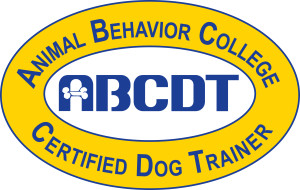Puppy Potty Training
Written on September 5, 2016
Intro to Puppy Potty Training
So you just brought home a new puppy; man is he CUTE, and just SO fluffy!
It is easy to be wrapped up in loving the new-parenthood of a fur-baby, but some things just can’t be ignored for long.
Like the puddles he keeps leaving on your rug, and that one spot near the door he won’t stop using as his personal toilet.
Let us help.
As one of the most common questions we get from clients with a new puppy, we wanted to make a quick and easy breakdown of some potty training tricks to help you start off on the right foot with your newest member of the family.
Your little bundle of fluff should never be left unattended in an area he could get into trouble! We would never leave our 6-month old baby alone to roam the house, that would be unsafe and a disaster! Yet people do it with brand new puppies all the time! Set them up for success.
- Crate train! Even if you don’t think you will use it forever, it is better to have a pup that feels comfortable and safe in a crate even if they rarely use one. Think of traveling, emergencies, or time at the vet! Those things don’t need to be any more stressful and they certainly don’t have to be if we can form positive associations early. Crate training helps immensely when it comes to potty-training. Dogs naturally don’t want to go to the bathroom in the same area they eat and sleep in. Thus having them in a crate when left alone will not only help you teach them where and when to go potty (as well as indicate when they need to go), but it will also use their natural instincts to help encourage them to hold it (learning to hold it instead of going immediately is a vital step in puppy potty-training.)
- Keep the crate free of any absorbent materials (this includes beds, blankets, and plush toys.) I know it is so hard to not leave your new puppy with these comfort items, but if you stick it out just through the initial potty-training stages it will be a smoother and quicker process. As we mentioned above, dogs naturally don’t want to go potty where they eat and sleep, but if they can on a towel the absorbs it in one corner and lay in the other, untouched, they will continue to do it (for this reason it is just as important to have an appropriately sized crate.) Leave him with a suitable chew toy instead, that way he can play without having something that will encourage him to use his crate as a bathroom.
- Playtime! Anytime you take your puppy from his crate he should immediately go outside. If he goes potty he can come inside to play (this play should absolutely be supervised but it will serve as an immediate reward and a connection will be made to potty outside equals free time and play inside). Depending on age, breed and size of your pup, he should go out again about 30 minutes to 1 hour after his last successful outing. General rule of thumb is that a dog can hold it 1 hour for every month of their life up to 10 hours (we recommend no more than 8). Larger breed dogs have larger bladders and can often “hold it” longer. If your puppy has still not gone to the bathroom after the time outside, place him back in the crate and try again in 1-2 hours. His reward for going potty outside is playtime inside, he should not get to play inside before going potty (the chances of him then going inside are much higher.) Continue this cycle until it is time to put him back in his crate. If you are busy doing things (like working on the computer or folding laundry) and you can’t keep a close eye on him but don’t want to leave him in the crate, use a leash! Put a leash on your pup to make sure he doesn’t wonder off and get into trouble, while still allowing him some freedom to play and be near you.
- Gradually extend the amount of “free time” your puppy gets after successful potty breaks. Example: At 10 weeks old, we allow him about 30 minutes to 1 hour before trying again. Provided all is going well and you are succeeding, then at 12 weeks you would extend this free time to 1-1.5 hours. All still going well…at 14 weeks extend to 1.5-2 hours and so on. This is teaching your puppy that with some responsibility and good manners in the home, he gets to hang out longer and longer. Eventually, you will have your house pet you always wanted without potty accidents, chewing and inconsistencies.
- Take him on “walks” in the house. Put the leash on and guide him into to new rooms, don’t let him sniff or fixate too long in any one area (as a general rule, this is a sign he might decide to go to the bathroom. This alters of course with dogs that are bred to sniff, like hounds. Either way, it is best to play it safe because the best way to potty train is to not have accidents!) These guided walks will help him get acclimated to each new room while understanding the boundaries (no chewing shoes, going potty under the bed, etc.)
These basic fundamentals will help you potty-train your new puppy in no time! Stick to a routine and he will quickly understand when and where he needs to go, as well as how to tell you it’s time!

